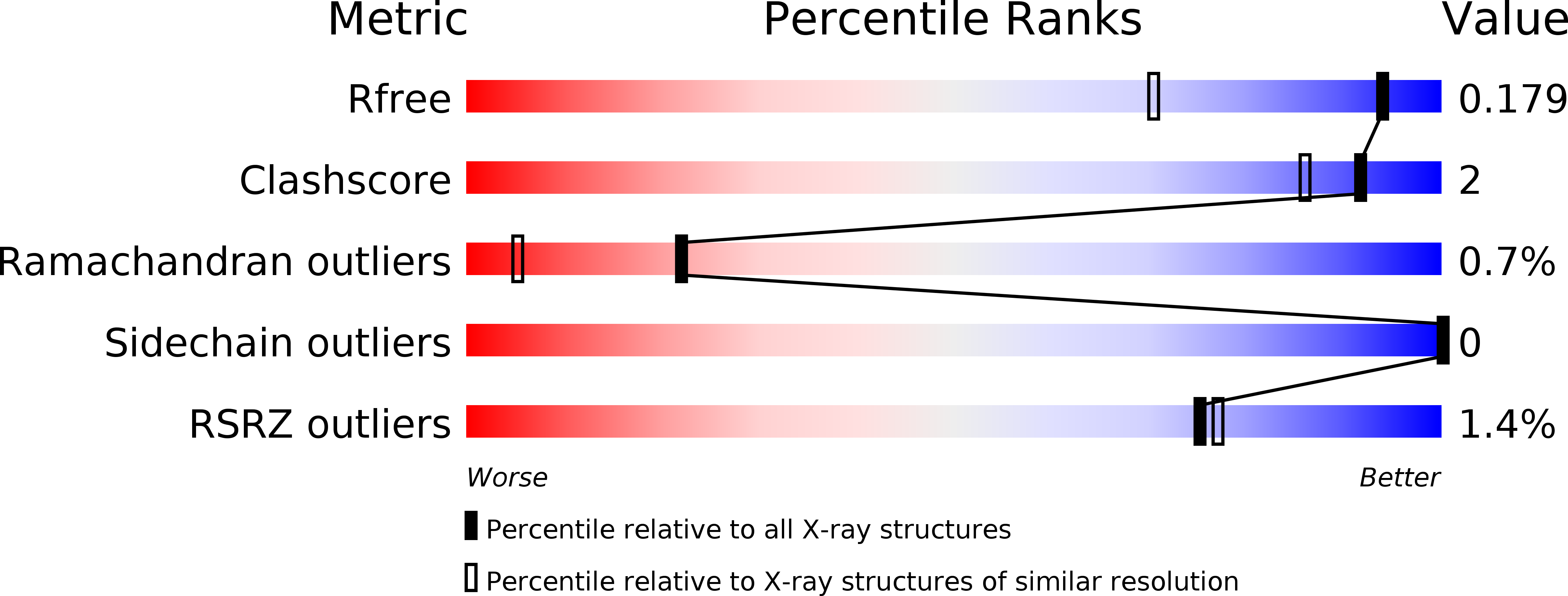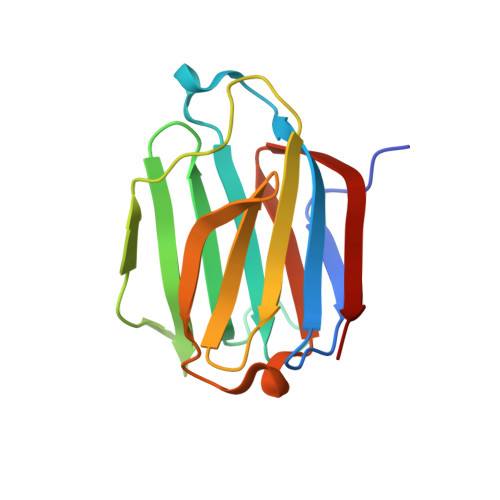Protein crystallization promotes type 2 immunity and is reversible by antibody treatment.
Persson, E.K., Verstraete, K., Heyndrickx, I., Gevaert, E., Aegerter, H., Percier, J.M., Deswarte, K., Verschueren, K.H.G., Dansercoer, A., Gras, D., Chanez, P., Bachert, C., Goncalves, A., Van Gorp, H., De Haard, H., Blanchetot, C., Saunders, M., Hammad, H., Savvides, S.N., Lambrecht, B.N.(2019) Science 364
- PubMed: 31123109
- DOI: https://doi.org/10.1126/science.aaw4295
- Primary Citation of Related Structures:
6GKQ, 6GKS, 6GKT, 6GKU, 6GLW, 6GLX, 6QRN - PubMed Abstract:
Although spontaneous protein crystallization is a rare event in vivo, Charcot-Leyden crystals (CLCs) consisting of galectin-10 (Gal10) protein are frequently observed in eosinophilic diseases, such as asthma. We found that CLCs derived from patients showed crystal packing and Gal10 structure identical to those of Gal10 crystals grown in vitro. When administered to the airways, crystalline Gal10 stimulated innate and adaptive immunity and acted as a type 2 adjuvant. By contrast, a soluble Gal10 mutein was inert. Antibodies directed against key epitopes of the CLC crystallization interface dissolved preexisting CLCs in patient-derived mucus within hours and reversed crystal-driven inflammation, goblet-cell metaplasia, immunoglobulin E (IgE) synthesis, and bronchial hyperreactivity (BHR) in a humanized mouse model of asthma. Thus, protein crystals may promote hallmark features of asthma and are targetable by crystal-dissolving antibodies.
Organizational Affiliation:
Immunoregulation Unit, VIB Center for Inflammation Research, Ghent, Belgium.















